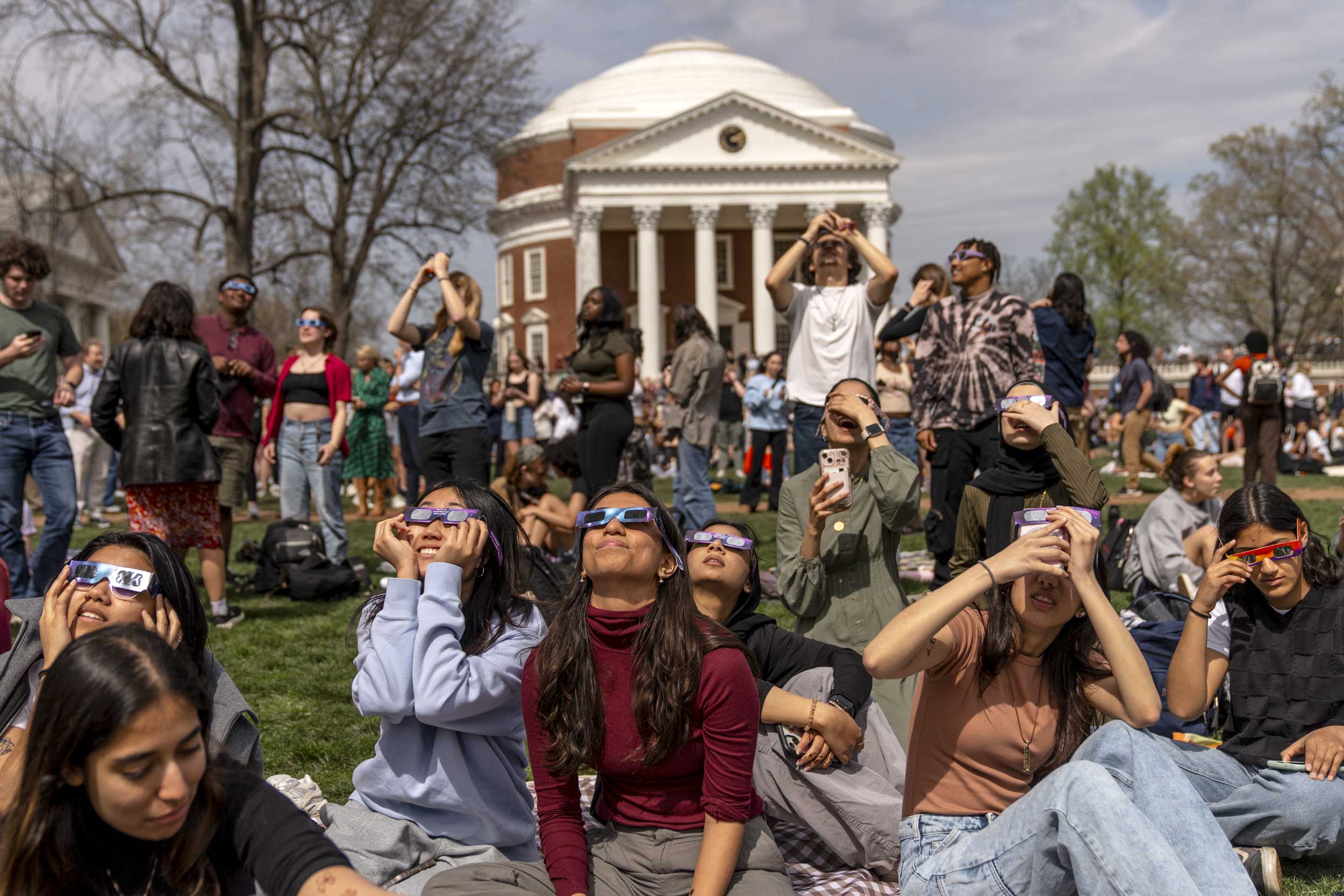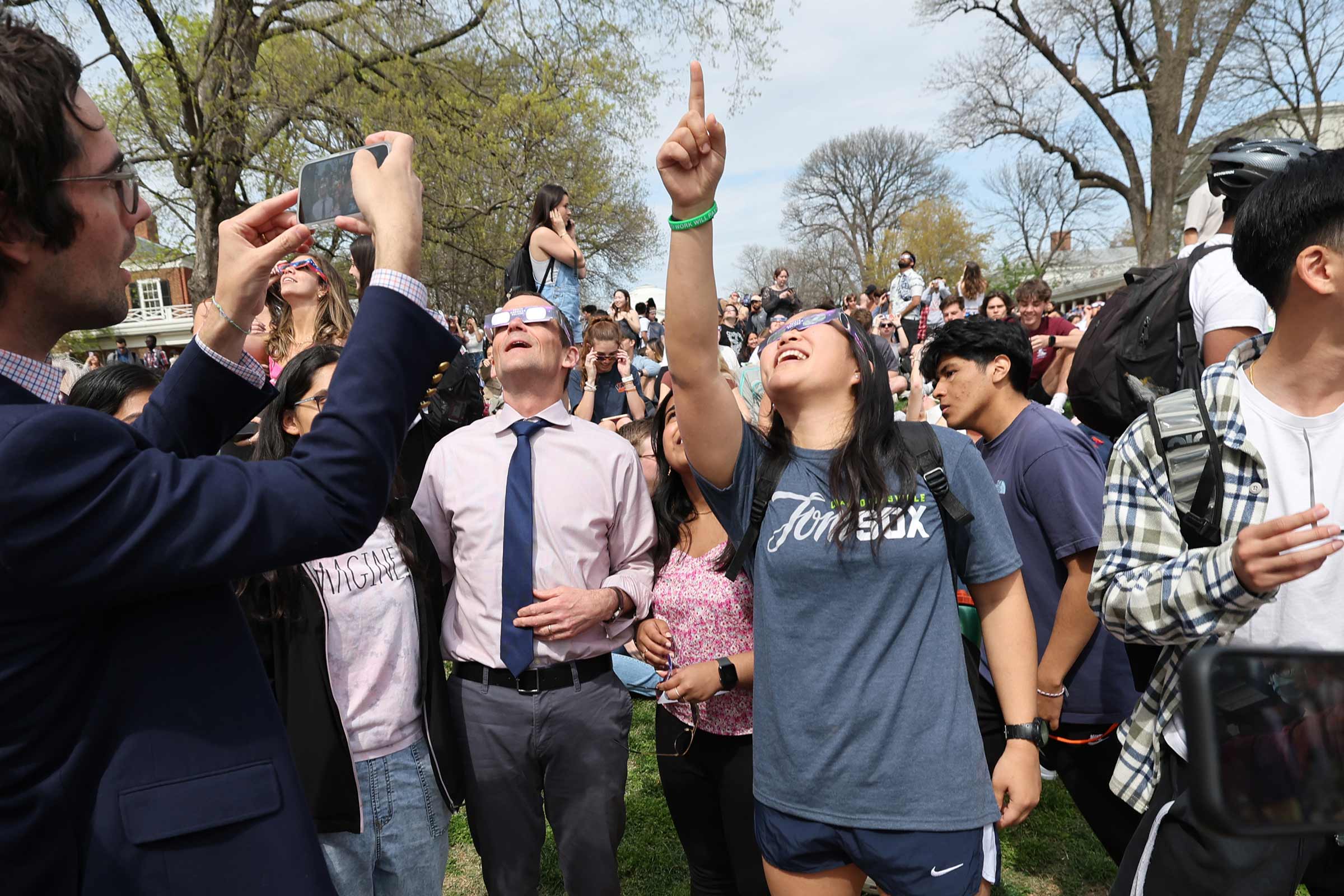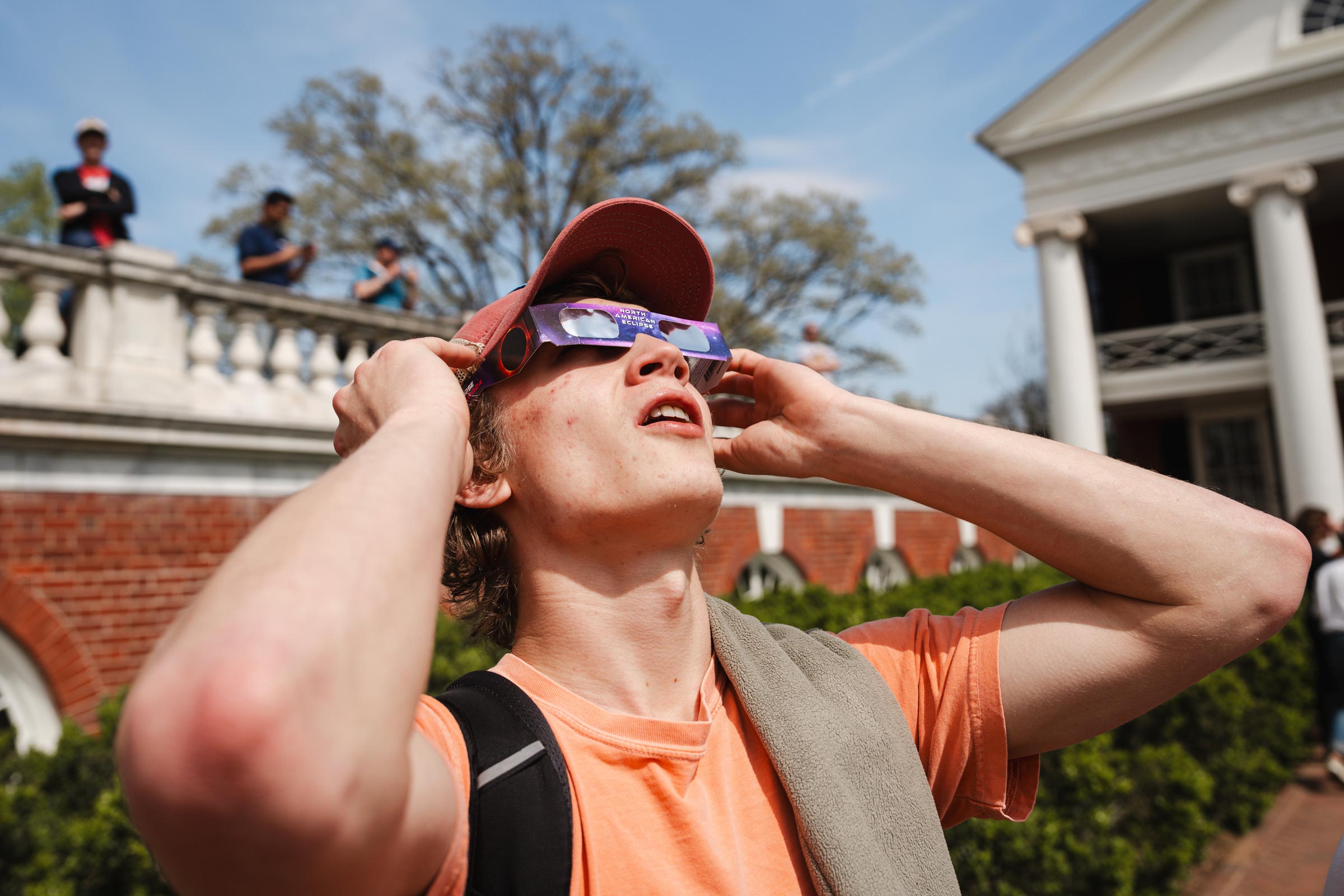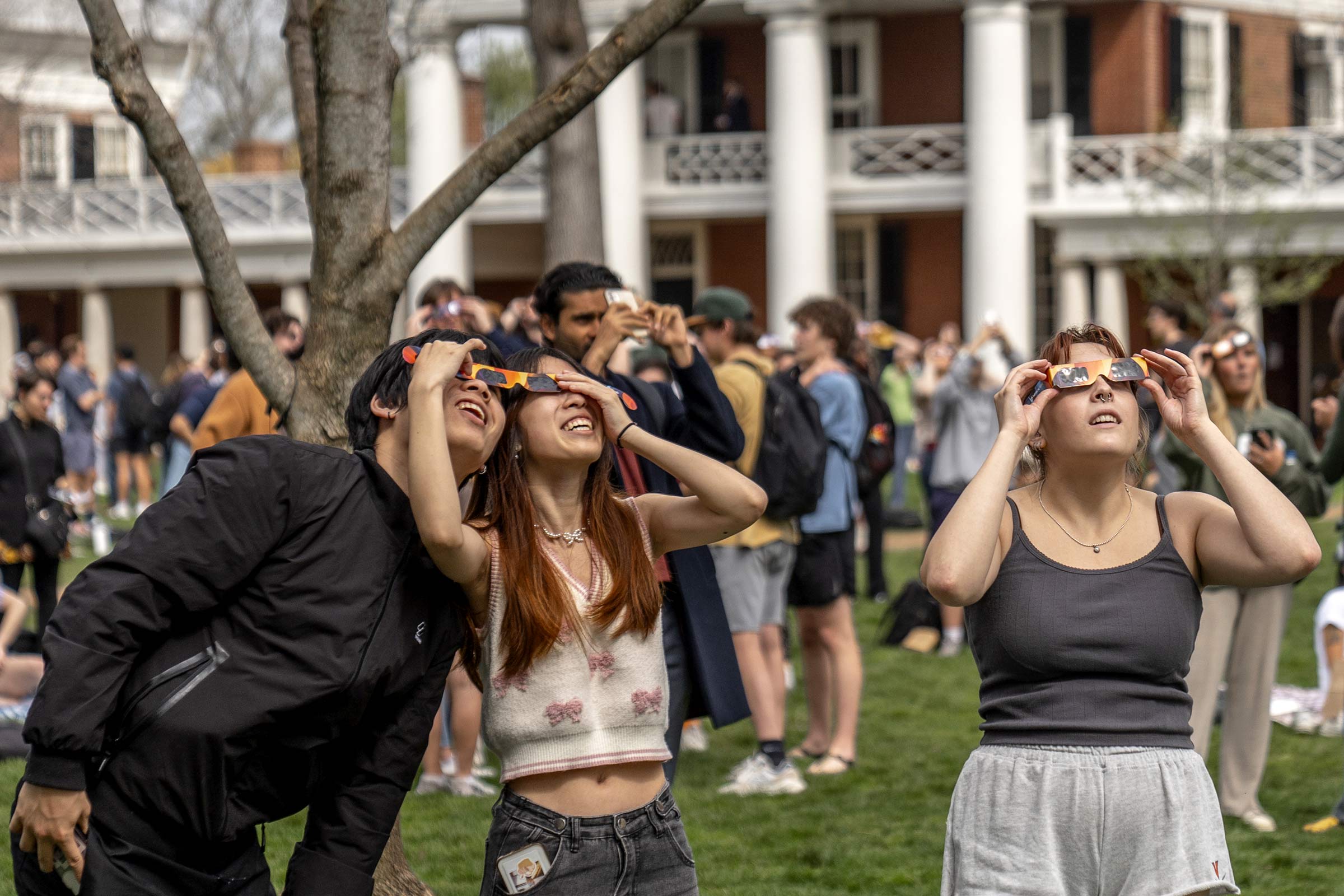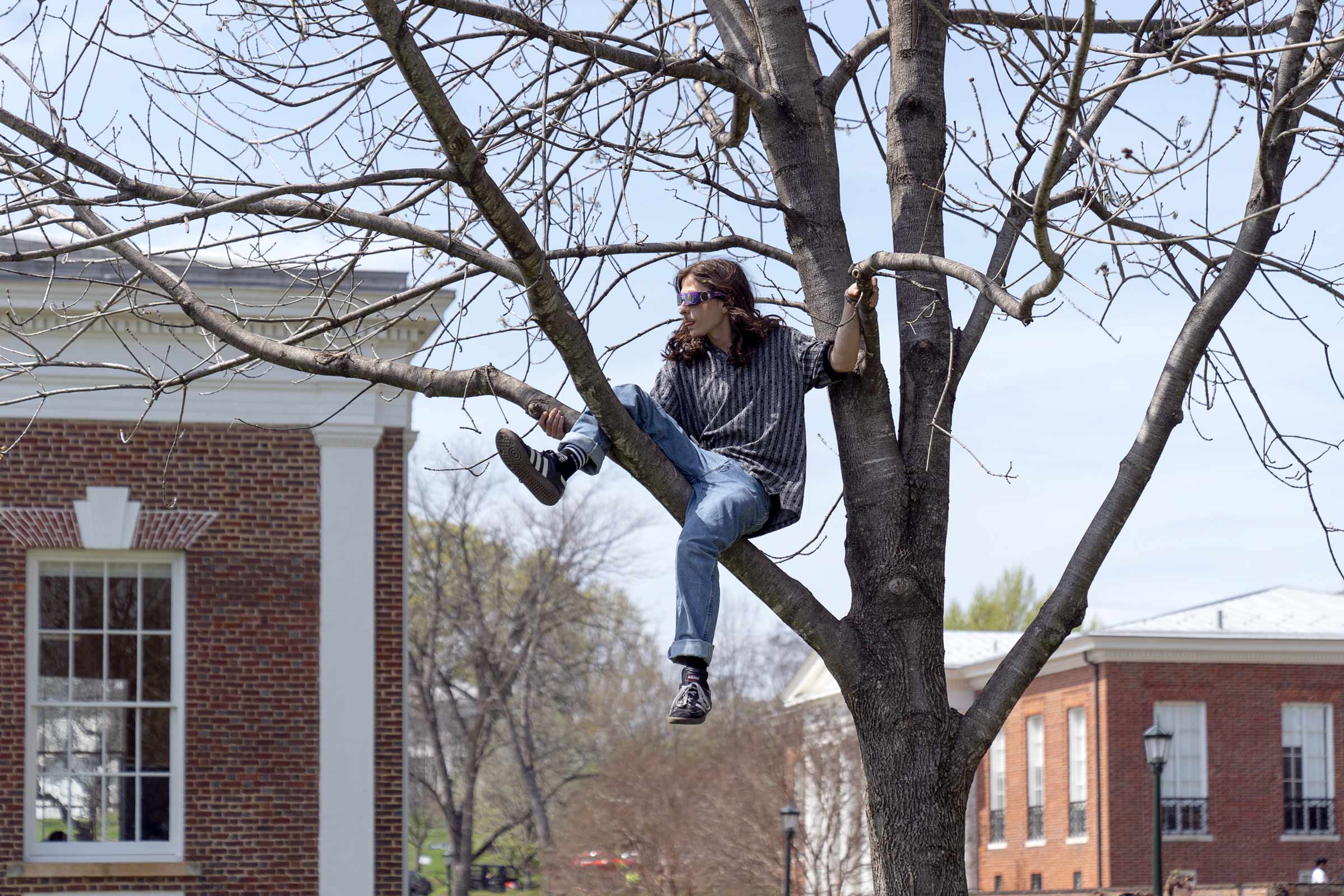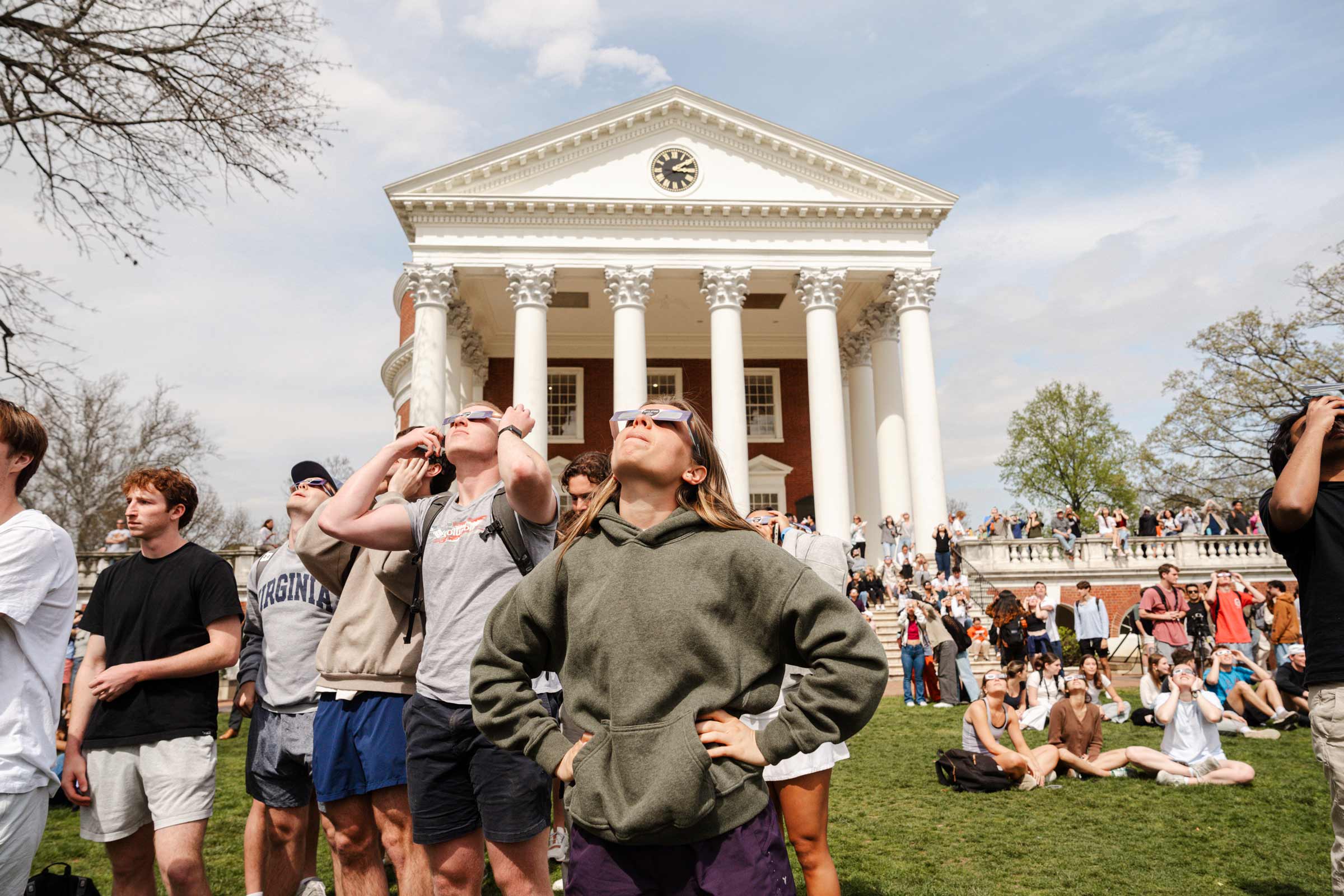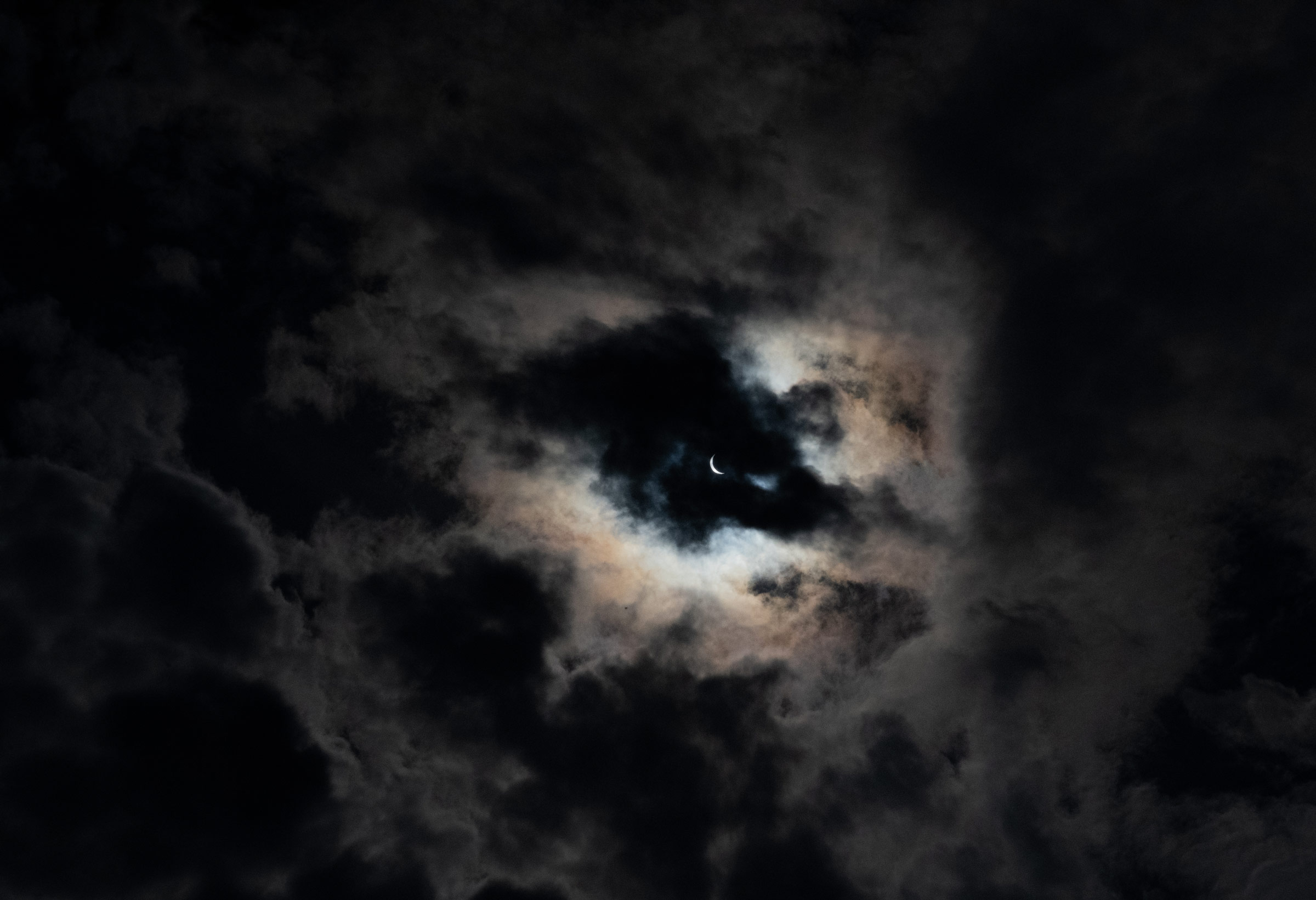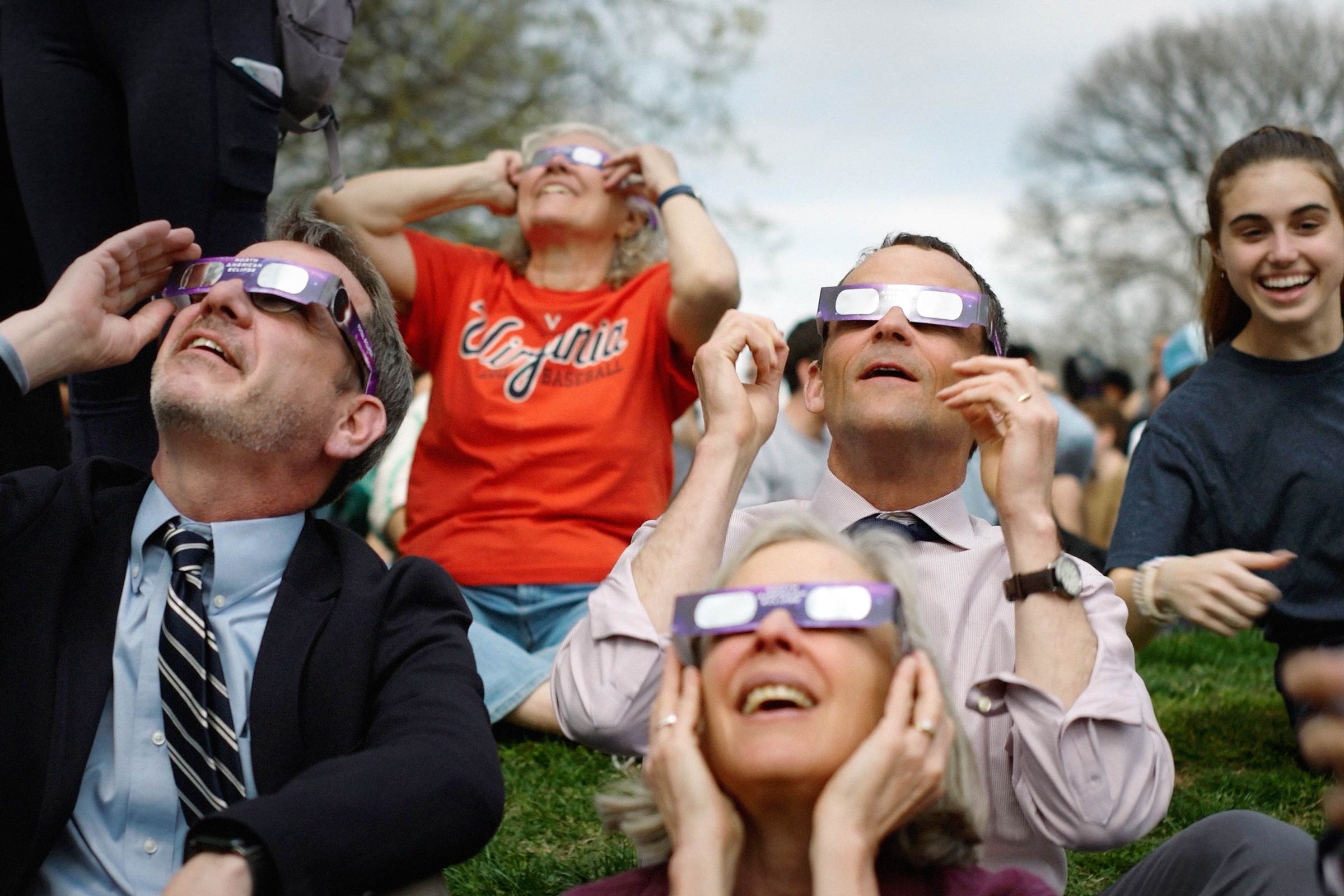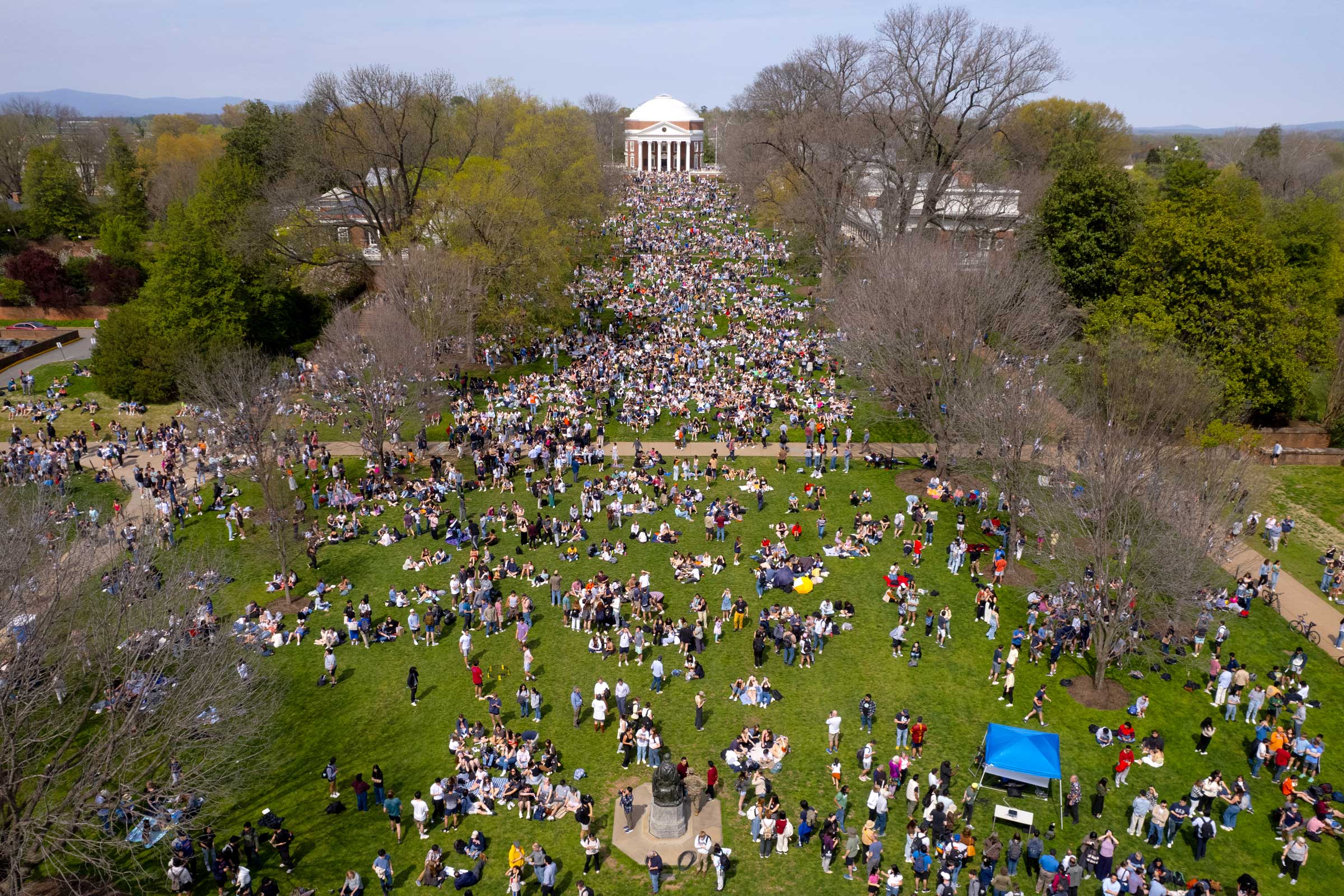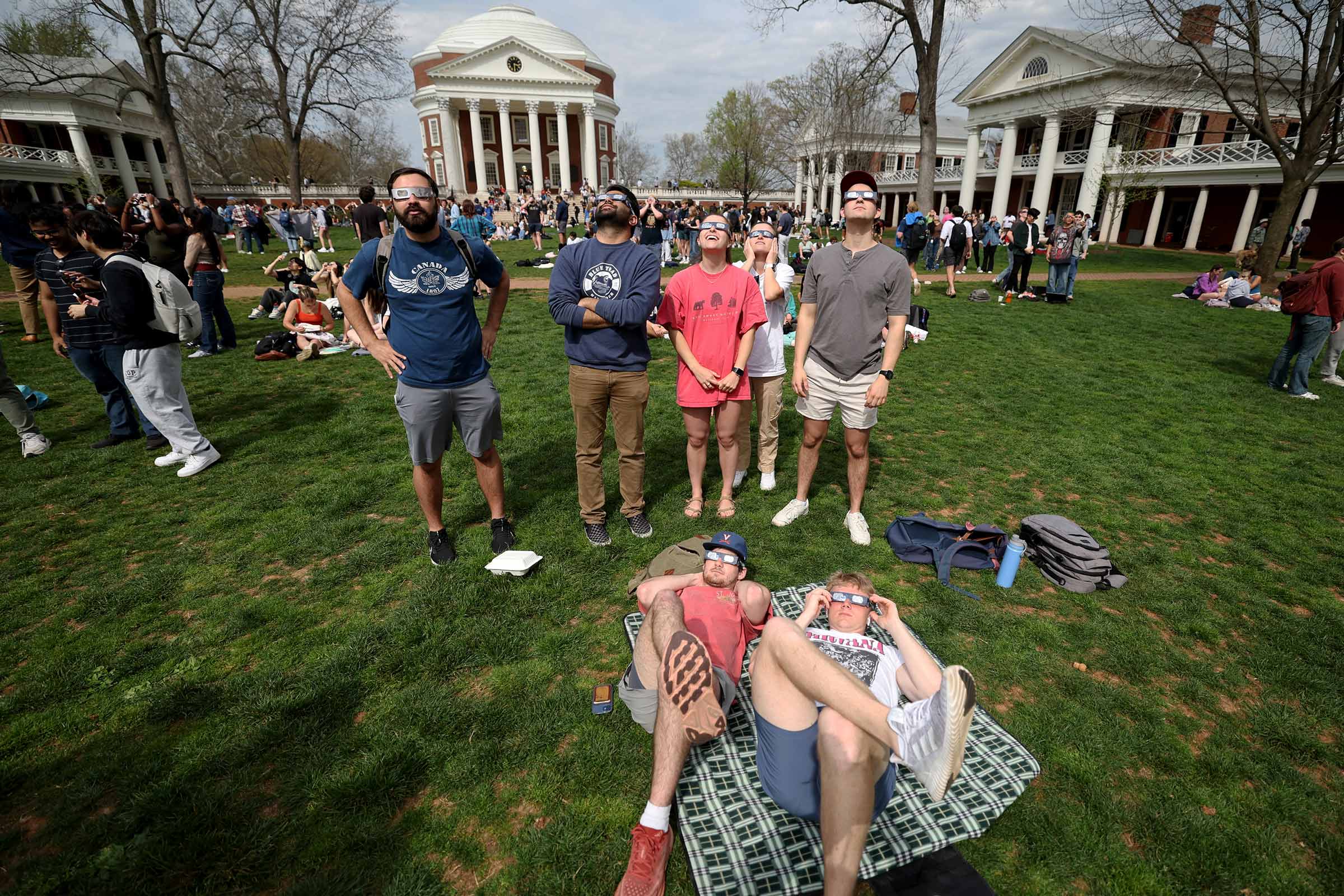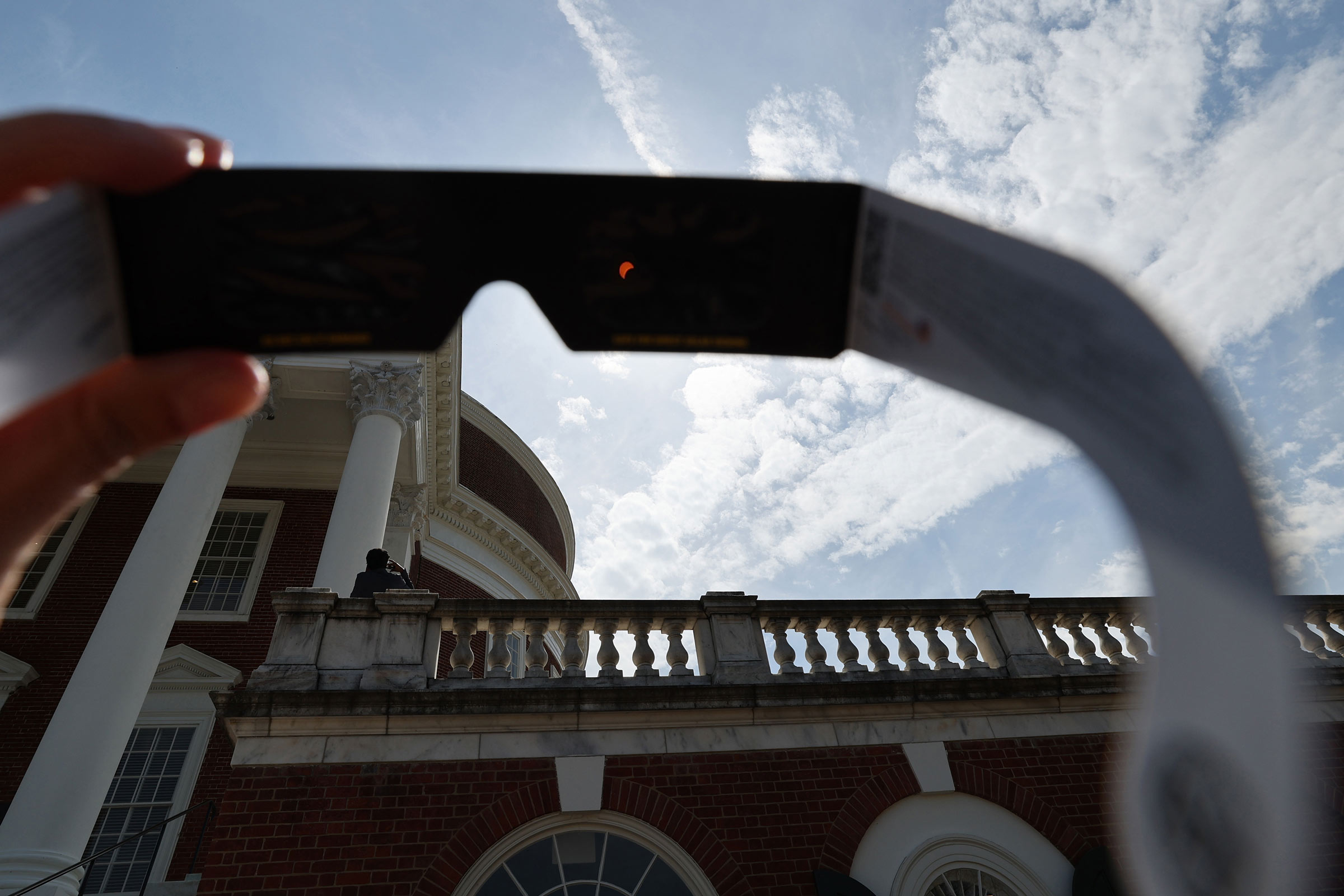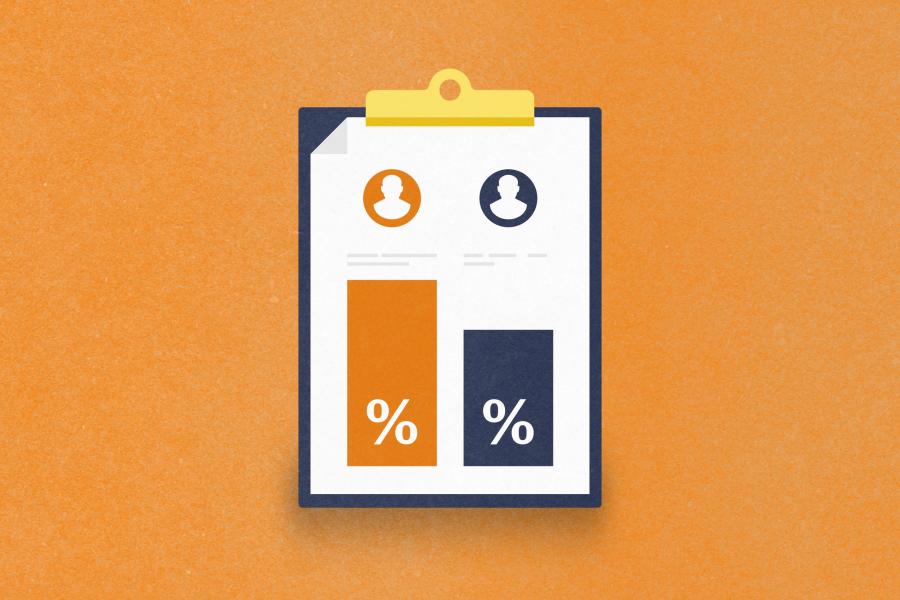Sometimes “most” is close enough.
Hundreds of University of Virginia students joined President Jim Ryan, the Astronomy Club and the UVA Student Council on the Lawn Monday to view the solar eclipse. The crowd stretched from the base of the Rotunda to past the Homer statue, rivaling the turnout for Final Exercises.
While Virginia was outside the path of the total eclipse, UVA sky gazers caught a sliver of totality as the moon’s shadow blocked about 85% of the sun, according to the UVA Department of Astronomy’s website.
